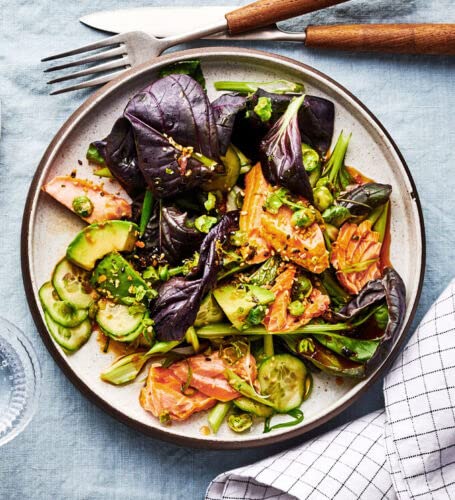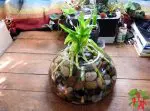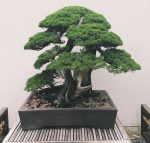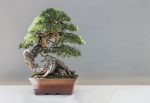This post contains affiliate links. If you buy something from one of our links we may earn a commission. Thanks
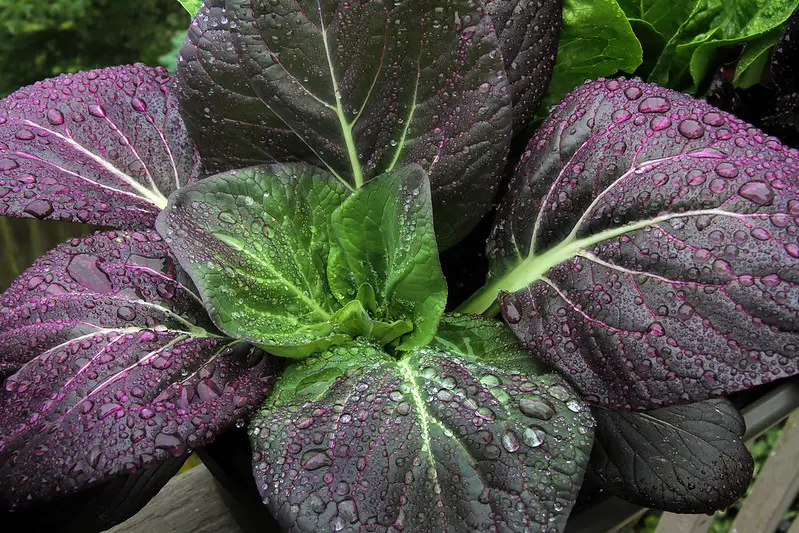
Discover how to grow bok choy indoors with our easy-to-follow guide! Transform your home into a lush, green oasis and enjoy fresh, homegrown veggies all year round.
To grow Bok Choy indoors, plant seeds in a well-drained soil mix and place the pot in a location with ample sunlight or under grow lights. Keep the soil consistently moist but not waterlogged. Indoor temperatures should be between 60-75°F for optimal growth. Harvest when leaves are fully formed but compact.
Are you looking for a fun and rewarding way to green up your indoor space while enjoying fresh produce?
Well, you’re in luck, because today we’re diving into the wonderful world of growing bok choy indoors.
That’s right, you can actually cultivate this tasty, nutritious vegetable right in the comfort of your own home.
So, stick around, and let’s embark on this exciting journey together to turn your indoor garden into a bok choy paradise!
How to Grow Choy Indoors Using Coco Coir
Welcome to our comprehensive guide on growing bok choy indoors!
We’re thrilled to have you here, and we can’t wait to share our knowledge and passion for indoor gardening with you.
In this first section, we’ll give you a quick rundown of what bok choy is, why it’s such a fantastic addition to your home garden, and the amazing benefits it brings to the table.
So, grab a cup of tea, find a cozy spot, and let’s dive right in as we explore the magic of nurturing bok choy within your very own four walls!
Getting to Know Bok Choy and Its Perks
Bok choy, also known as Chinese cabbage or pak choi, is a leafy green vegetable that packs a powerful nutritional punch.
It’s chock-full of vitamins A, C, and K, as well as minerals like calcium and iron.
Plus, it adds a delightful crunch and mild flavor to your favorite stir-fries, salads, and soups.
Growing Bok Choy is not only a fun and rewarding experience but also a fantastic way to keep your kitchen stocked with fresh, healthy greens.
The Beauty of Indoor Bok Choy Gardening
Growing bok choy indoors offers several advantages that’ll make you fall in love with this hobby.
For starters, you can grow your greens year-round, regardless of the weather outside.
Indoor gardening also protects your bok choy from pests and diseases that are more prevalent outdoors.
Plus, nurturing bok choy in your home creates a cozy, green atmosphere, contributing to your overall well-being and happiness.
The Allure of Purple Bok Choy and Coco Coir
Purple bok choy is a vibrant and stunning variety that brings an extra pop of color to your plate.
It offers the same great taste and health benefits as its green cousin, making it a delightful addition to your indoor garden.
Coco coir, a popular and sustainable growing medium, is perfect for nurturing your purple bok choy.
It retains moisture, provides ample aeration, and is easy to manage, ensuring your bok choy thrives and flourishes in your indoor garden.
And the best thing is oriental vegetables mature fast! Bok Choy is ready in about 40 days making it as fast a crop as lettuce.
Growing Bok Choy In My Hydroponic Grow Tent
Here is a video showing my Bok Choy growing in my automated hydroponic grow tent.
I am using half gallon pots with coco coir. Lights and watering are all automated and I am using a DIY flood and drain system for growing them.
If you are not familiar with Bok Choy also called Pak choi it is a fast-growing Oriental vegetable perfect for stir fries.
Materials and Equipment
Alright, now that we’ve got you all fired up to start growing your very own bok choy indoors, let’s talk about what you’ll need to set up your home garden.
Don’t worry; we’ve got your back! In this section, we’ll go over all the essential materials and equipment to ensure your indoor gardening adventure is a roaring success.
From seeds to pots and everything in between, we’ll guide you through assembling the perfect toolkit to transform your living space into a thriving bok choy haven.
So, let’s get started, shall we?
Sourcing Purple Bok Choy Seeds
Start your indoor gardening journey by getting your hands on some high-quality purple bok choy seeds.
You can find them at your local garden center or through reputable online seed stores. O course you can also grow its green cousin if you prefer.
Remember, good seeds are the foundation of a successful harvest, so invest in the best you can find! Buy Purple Bok Choy seeds on Amazon
Embracing Coco Coir
Coco coir, a sustainable growing medium made from coconut husks, is perfect for your indoor bok choy garden.
It boasts excellent water retention, drainage, and aeration, creating the ideal environment for your plants to thrive.
You can purchase coco coir in various forms, such as bricks or loose bags, from garden centers or online stores.
I only use Canna Coco. It is already buffered and low in salt and has the best quality coco coir consistently. Their coco nutrients also work really well.
I prefer using coco bricks. They are easy to rehydrate and much easier to store.
But loose Canna coco is ready to use right out of the bag
Picking the Perfect Containers or Pots
Choose containers or pots with drainage holes to prevent waterlogging and ensure your bok choy’s roots stay healthy.
Look for pots that are at least 6 inches deep and wide to give your plants ample room to grow.
Don’t forget to use saucers to catch excess water and protect your surfaces.
Shining a Light on Grow Lights
Since bok choy needs plenty of light to grow well, investing in grow lights is crucial, especially if you lack sunny windows.
Look for full-spectrum LED lights that mimic natural sunlight and help your plants flourish.
Here is the light I use its a Spider Farmer SF2000 and I can cover a 4 x 6-foot area with it.
They make great lights that are affordable and come in smaller and larger sizes, Here is my Spider Farmer SF2000 Unboxing And Review
 Starting with Seedling Trays or Pots (Optional)
Starting with Seedling Trays or Pots (Optional)
If you prefer to give your bok choy seedlings a head start before transplanting them into larger pots, consider using seedling trays or small pots.
This allows you to monitor their growth more closely and makes transplanting easier when they’re ready.
I sometimes use individual 2-inch square small pots to start transplants like tomatoes or peppers but for fast-growing crops like this or lettuce you can direct sow your Bok Choy directly too.
Feeding with Liquid Fertilizer
Bok choy needs proper nutrients to grow big and healthy.
Choose a well-balanced liquid fertilizer formulated for leafy greens, and follow the manufacturer’s instructions for application rates and frequency.
You can also use slow-release fertilizer spikes. This will ensure your bok choy gets all the nutrients it needs to thrive.
Young seedlings don’t need to be fertilized until they have their first true leaves.
Keeping an Eye on pH with a Testing Kit
To maintain a healthy environment for your bok choy, invest in a pH testing kit. Bok choy prefers a slightly acidic to neutral pH (6.0-7.0).
Regularly monitoring and adjusting the pH of your coco coir will keep your plants happy and healthy.
Canna Coco is already at the perfect pH of around 6.0. Over time fertilization can lower pH so you might want to test your runoff after watering
But Bok Choy finishes so fast that this probably won’t be necessary.
Watering with Precision: Can or Spray Bottle
A watering can or spray bottle is essential for maintaining proper moisture levels in your bok choy garden.
Choose a watering can with a fine rose for gentle, even watering, or opt for a spray bottle, especially when dealing with seedlings.
Handy Gardening Tools for Success
To make your indoor gardening experience smooth and enjoyable, gather a few essential tools.
You may want a trowel for transplanting, scissors or shears for harvesting, and gloves for protecting your hands.
These simple tools will make your gardening tasks easier and more efficient.
Preparing the Coco Coir
Now that we’ve gathered all our materials and equipment, it’s time to get our hands a little dirty and prepare the coco coir for your purple bok choy!
But fear not, we’re here to guide you through the process, making it a breeze.
In this section, we’ll take you step by step through hydrating, buffering, and adjusting the pH of your coco coir, ensuring it’s the perfect home for your precious bok choy seeds.
So, roll up your sleeves, and let’s dive into the exciting world of coco coir preparation!
The Wonders of Coco Coir as a Growing Medium
Coco coir has become a favorite among indoor gardeners, and for good reason!
This sustainable, eco-friendly medium is made from coconut husks and offers numerous benefits.
Its excellent water retention, combined with proper drainage and aeration, creates an ideal environment for your bok choy’s roots.
Plus, it’s resistant to pests and diseases, giving your plants an extra layer of protection.
Hydrating and Buffering the Coco Coir
If you’re using coco coir bricks, you’ll need to hydrate them before use.
Simply follow the manufacturer’s instructions, which usually involve soaking the brick in water until it expands and becomes loose and fluffy.
For pre-buffered coco coir like Canna Coco, you can skip this step, as it’s ready to use straight out of the bag.
Add CalMag!
Whether you use loose coco or the bricks you must supplement with CalMag.
I soak each brick in 2-2 1/2 gallons of water to rehydrate them. Each brick makes about 5 gallons of coco coir.
I also add 2-3 ml of CaliMagic per gallon which is a calcium and magnesium supplement.
You must use a calmag supplement for growing in coco coir to be successful.
Coco coir needs a lot of it to balance it so other nutrients are available.
Coco coir by itself is a hydroponic medium and provides little nutrition.
Most fertilizers don’t contain enough calmag on their own and will need to be supplemented.
After testing dozens I have found CaliMagic to be the best calmag supplement.
 Checking and Adjusting the pH Level
Checking and Adjusting the pH Level
Bok choy thrives in a slightly acidic to neutral pH range (6.0-7.0). Use a pH testing kit to check the pH of your coco coir.
If you’re using pre-buffered coco coir, like Canna Coco, you likely won’t need to make adjustments.
Filling Your Containers with Coco Coir Goodness
Once your coco coir is prepared, it’s time to fill your pots or containers. Make sure to use containers with drainage holes and saucers to catch excess water.
Fill the pots about two-thirds full with the hydrated and pH-adjusted coco coir, leaving room for your bok choy seeds and a bit of extra coco coir on top.
Now you’re all set to start planting your purple bok choy seeds!
Planting Purple Bok Choy Seeds
Get ready for the moment we’ve all been waiting for planting those beautiful purple bok choy seeds!
In this section, we’ll walk you through everything you need to know about planting your seeds, from optional pre-germination techniques to seed spacing and proper depth.
With our guidance and your newfound indoor gardening skills, you’ll be well on your way to growing a lush, vibrant purple bok choy garden right inside your home.
So, let’s get planting and watch those seeds come to life!
Optional Pre-Germination Techniques
Some gardeners like to pre-germinate their seeds to speed up the germination process.
If you’re interested in trying this, simply place your bok choy seeds on a damp paper towel, fold it over, and seal it in a plastic bag.
Keep the bag in a warm spot for a few days, checking regularly for sprouted seeds.
Once sprouted, carefully transfer them to your prepared coco coir.
Planting in Seedling Trays or Containers
You can start your purple bok choy seeds in seedling trays or small pots, which makes transplanting to larger containers easier later on.
Alternatively, plant the seeds directly into your prepared containers or pots. Both methods work well; it’s a matter of personal preference.
Water Sparingly
One note of caution. If you direct sow be careful not to overwater.
Use moist coco and since the plant is small it should not need additional watering.
Once it gets a bit larger just water the edges of the pot. This will encourage the roots to spread in search of water and nutrients.
Mindful Seed Spacing and Depth
When planting your bok choy seeds, space them about 2 inches apart to give them ample room to grow.
Sow the seeds about 1/4 inch deep in the coco coir, which is just deep enough to provide good seed-to-medium contact without burying them too much.
If you are direct sowing place 2-3 seeds in the center of each pot.
Covering and Watering the Seeds
Gently cover your seeds with a thin layer of coco coir and lightly water them using a watering can with a fine rose or a spray bottle.
You want the coco coir to be damp but not soaking wet, as overwatering can cause the seeds to rot or encourage fungal growth.
Finding the Perfect Spot for Germination
Place your containers or seedling trays in a warm area (65-75°F) with Led light or sunlight. Bok choy seeds usually germinate within 5-10 days.
Once your seedlings have emerged, move them to a brighter spot or under your grow lights, ensuring they receive at least 12-14 hours of light daily.
It is important to make sure germinating seeds are getting enough light or they will get tall and leggy.
Caring for Purple Bok Choy Seedlings
Congratulations, your purple bok choy seedlings have sprouted! Now, it’s time to nurture them as they grow and develop into strong, healthy plants.
In this section, we’ll share valuable tips and tricks for providing your seedlings with the love and care they need to thrive.
From watering and fertilizing to managing light and temperature, we’ll guide you through each step of the journey, ensuring your little bok choy seedlings have the best chance to grow into a vibrant, bountiful harvest.
Let’s get those green thumbs ready and dive in!
Light Up Their Lives: Grow Light Intensity and Duration
Ensuring your bok choy seedlings receive the right amount of light is crucial for healthy growth.
Keep your grow lights about 6-12 inches above the plants, adjusting the height as they grow.
If the lights are too far away, your plants may become leggy. Aim for 12-14 hours of light per day to promote strong growth and prevent weak, spindly plants.
H2O Love: Watering and Moisture Levels
Proper watering is key to happy bok choy seedlings. Keep the coco coir consistently moist but not soggy, as overwatering can lead to root rot or fungal issues.
A watering can with a fine rose or a spray bottle is perfect for maintaining even moisture levels.
Room to Grow: Thinning Seedlings
As your seedlings grow, it’s important to give them enough space to develop.
Thin your seedlings by removing weaker plants, leaving the strongest ones with a spacing of about 2 inches if in a tray.
If you direct seeded leave the healthiest plant and remove the rest.
This will ensure they have room to grow and receive adequate light and airflow.
pH Perfection: Monitoring and Adjusting Levels
Regularly check the pH of your coco coir using a pH testing kit, aiming to maintain a slightly acidic to a neutral range (6.0-7.0).
Don’t try to test the coco itself instead measure the pH of the runoff.
If adjustments are needed, use the appropriate pH up or down products, following the manufacturer’s instructions to create a balanced environment for your bok choy seedlings.
Feeding Time: Liquid Fertilizer Applications
To keep your bok choy seedlings healthy and strong, apply a balanced liquid fertilizer formulated for leafy greens.
Follow the manufacturer’s guidelines for application rates and intervals, which typically involve diluting the fertilizer in water and applying it during watering.
You can use slow-release fertilizer spikes for long-term feeding.
Remember I talked about calmag? You need to add some every time you water. Start with 2 ml per gallon and watch your plants.
Regular feeding will ensure your seedlings have all the nutrients they need to grow into a lush, productive harvest.
Harvesting Your Indoor Purple Bok Choy
The time has come to enjoy the fruits of your labor. After about 40 days your indoor purple bok choy should be ready for harvest!
In this section, we’ll share everything you need to know about reaping the rewards of your hard work.
From identifying the perfect moment to pick those gorgeous leaves, to the best techniques for a bountiful harvest, we’re here to help you make the most of your homegrown crop.
So, let’s grab those gardening scissors and celebrate your well-deserved success!
Timing is Everything: The Right Time to Harvest
Keep an eye on your purple bok choy plants and look for signs that they’re ready for harvest.
Typically, they’re good to go when they’re about 6-8 inches tall and have several mature leaves.
This usually occurs around 30-45 days after planting, but remember that growth rates can vary depending on light, temperature, and care.
Picking Your Technique: Cut-and-Come-Again or Whole Plant
There are two popular methods for harvesting bok choy: the cut-and-come-again technique and the whole plant harvest.
For cut-and-come-again, simply snip off individual outer leaves, leaving the inner ones to continue growing.
This method allows you to enjoy multiple harvests from the same plant.
Alternatively, you can harvest the whole plant by cutting it off at soil level. This method is best when you want to enjoy an entire head of bok choy at once.
Storing and Savoring Your Harvest
To store your freshly harvested bok choy, wrap the leaves loosely in a paper towel or cloth and place them in a perforated plastic bag.
Store the bag in the crisper drawer of your refrigerator, where they should stay fresh for up to a week.
When you’re ready to enjoy your homegrown purple bok choy, simply wash and prepare it in your favorite recipes.
It’s perfect for stir-fries, salads, and soups, adding a burst of color and a healthy dose of nutrients to your meals.
Common Pests and Diseases in Indoor Bok Choy Cultivation
While growing purple bok choy indoors has its advantages, like avoiding many outdoor pests and diseases.
It’s still important to be aware of potential issues that can affect your plants.
In this section, we’ll discuss common pests and diseases you might encounter in your indoor bok choy garden and share tips for prevention and treatment.
With a little vigilance and some handy know-how, you can keep your bok choy plants healthy, happy, and productive.
Let’s tackle those pesky problems together and keep your indoor garden flourishing!
Unwanted Guests: Identifying Common Pests and Diseases
Indoor bok choy cultivation can still be affected by a few pests and diseases.
Some common culprits include aphids, spider mites, and whiteflies.
Additionally, diseases such as powdery mildew, damping-off, and root rot can also pose challenges.
Keep an eye out for signs of these issues, like discolored leaves, small bugs, or stunted growth, to catch problems early.
The only problem I have encountered is spider mites. They like it warm and dry just like it is indoors, especially during the winter heating season.
An Ounce of Prevention: Control Methods
Preventing pests and diseases from infesting your indoor garden is crucial.
Keep your growing area clean and free of debris, and ensure proper airflow around your plants.
Regularly inspect your plants for early signs of trouble, and isolate any affected plants to prevent the spread of pests or diseases.
Sterilize your gardening tools between uses to minimize the risk of transmitting pathogens.
Going Green: Safe and Organic Solutions
If pests or diseases do strike, it’s essential to use safe, organic solutions to protect your indoor bok choy.
Insecticidal soaps or neem oil can effectively combat common pests.
For fungal diseases like powdery mildew, try using a popular home remedy of diluted milk solution or a baking soda spray, or a commercial organic fungicide.
Remember to follow the label instructions for any products you use and reapply as needed to keep your plants healthy and thriving.
Tips for a Successful Indoor Purple Bok Choy Garden
You’re well on your way to becoming an indoor purple bok choy gardening pro, but we’ve got a few more tips up our sleeves to help you achieve the best results!
In this section, we’ll share some additional insider knowledge to ensure your indoor garden is nothing short of spectacular.
From optimizing light exposure to maintaining ideal humidity levels, these tips will help you cultivate a thriving, productive purple bok choy garden right in the comfort of your own home.
So, let’s dive into these expert secrets and watch your garden flourish!
Space and Light Savvy: Maximizing Utilization
Make the most of your indoor growing area by optimizing space and light utilization.
Use vertical gardening techniques, like shelving or trellises, to take advantage of vertical space.
Reflective materials like Mylar or white paint can help bounce light around and ensure all your plants receive adequate illumination.
While light-loving plants like tomatoes or peppers are kept under the light you can grow low-light plants like lettuce on the edges of the light.
Keeping it Comfy: Temperature and Humidity Monitoring
Pay close attention to temperature and humidity levels in your growing space.
Bok choy prefers temperatures between 60-70°F and moderate humidity levels (40-60%).
Use a thermometer and hygrometer to keep track of these conditions, and make adjustments using fans, heaters, or humidifiers as needed.
For greater efficiency, you could consider using a grow tent for your vegetables.
Healthy Rotation: Maintaining Soil Health
Although you’re growing in coco coir, rotating your crops can still help maintain the overall health of your indoor garden.
Switching up the types of plants you grow in your containers can prevent the buildup of pests or diseases specific to certain plants, and it can help ensure a balanced nutrient profile for your plants.
Variety is the Spice of Life: Experimenting with Bok Choy Types
Don’t be afraid to try growing different bok choy varieties in your indoor garden.
In addition to purple bok choy, there are numerous other types with unique flavors, textures, and colors.
Napa cabbage is another fast-growing oriental vegetable.
Experimenting with different varieties can be both fun and rewarding, allowing you to discover new favorites and expand your indoor gardening horizons.
Bok Choy FAQs
Growing Bok Choy indoors has its set of frequently asked questions that many gardeners wonder about.
Whether it’s about the plant’s ability to grow back after a trim or its specific lighting needs, understanding these key points can significantly help you succeed in nurturing this leafy green vegetable.
Here are some common questions and their answers:
Q: Does bok choy grow well indoors?
A: Yes, bok choy can thrive indoors as long as it receives sufficient light and is planted in well-drained soil.
Q: Does bok choy grow back after cutting?
A: Yes, bok choy can regrow after being cut. Harvest the outer leaves first, leaving the inner leaves to continue growing.
Q: Can bok choy be grown in pots?
A: Absolutely, bok choy grows well in pots. Use containers that are at least 6 inches deep and ensure they have proper drainage.
Q: Does bok choy need direct sunlight?
A: While bok choy prefers full sun, it can tolerate partial shade. Indoors, it does well under grow lights or in a sunny window.
How To Grow Bok Choy Indoors Final Thoughts
As we wrap up our journey into the wonderful world of growing purple bok choy indoors, we hope you’re feeling inspired and well-equipped to embark on your own gardening adventure!
With the tips, techniques, and knowledge we’ve shared, you’re now prepared to create a thriving indoor bok choy garden that will yield a delicious, nutritious, and colorful harvest.
Remember to have fun, be patient, and don’t be afraid to learn from any challenges along the way.
Happy gardening, and here’s to your beautiful, bountiful purple bok choy harvest!
A Look Back: How To Grow Bok Choy Indoors Recap
We’ve covered the entire process of growing purple bok choy indoors, from selecting materials and preparing coco coir, to planting seeds, caring for seedlings, and harvesting your delicious crop.
Along the way, we’ve highlighted the numerous benefits of indoor gardening, including better control over growing conditions, avoidance of many outdoor pests, and the ability to grow fresh produce year-round.
Branching Out: Encouragement to Grow Other Indoor Veggies
Now that you’ve mastered the art of growing purple bok choy indoors, why not try your hand at cultivating other vegetables in your indoor garden?
Many leafy greens, herbs, and even some fruiting plants can thrive in an indoor environment with the proper care and attention.
Experiment with new varieties, learn from your experiences and enjoy the rewards of a diverse, abundant indoor garden. Happy growing!
Read more about my Apartment Kitchen Garden




![2 Pack Canna Coco - 50L Bag 2X[902174] 2 Pack Canna Coco - 50L Bag 2X[902174]](https://m.media-amazon.com/images/I/51l1t0Q5QgL._SL500_.jpg)



